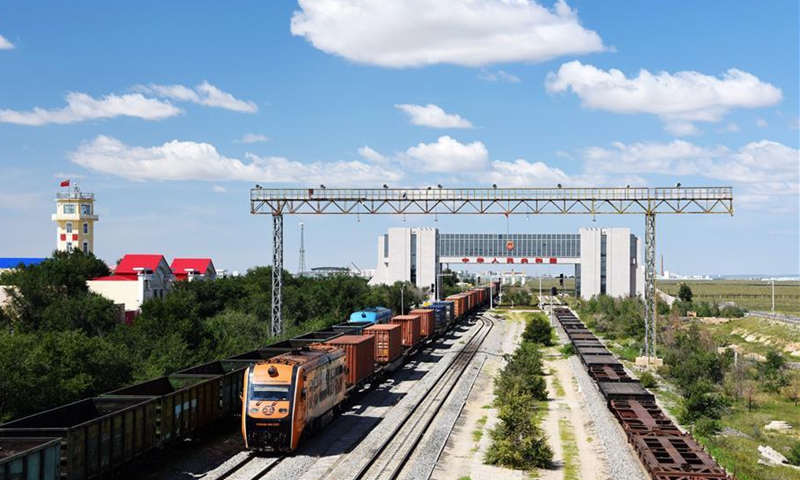SOURCE / INDUSTRIES
Nanjing Nangang puts electric freight locomotive into operation

A China-Europe freight train runs through the national gate at Erenhot Port in north China's Inner Mongolia Autonomous Region, Sept. 4, 2020. The border port of Erenhot has seen a total of 1,500 China-Europe freight trains passing through this year, local authorities said Friday.Photo:Xinhua
Chinese steel company Nanjing Nangang put its electric freight locomotive into operation on Saturday, effectively reducing its overheads and carbon dioxide emissions, according to domestic news outlet chinanews.com.
Converted from a diesel-powered locomotive, the electric freight train is 14.9 meters long and weighs 92 tons.
Powered by lithium iron phosphate batteries, the train can be loaded with 2,500 tons of cargo for traveling up to 120 kilometers with a maximum speed of 20 kilometers per hour.
Compared with the original locomotive, the electric locomotive can fast charge 600 kilowatt-hours in only 2 hours, has a 24 percent increase in starting traction and a 25% increase in continuous traction, and has smart functions such as remote control, unmanned driving and digitalization.
It is estimated that its electricity consumption is around 390,000 kilowatt-hours per year, which will reduce fuel consumption by 172 tons and emissions of carbon dioxide and other greenhouse gases by 816.9 tons.
China currently deploys approximately 30,000 units of diesel-powered locomotives for transporting goods.
"If all locomotives complete the electrification transformation, annual electricity consumption is expected to be 11.7 billion kilowatt-hours, which will reduce fuel consumption by 5.16 million tons, sulfur dioxide by 54,000 tons and carbon dioxide by 19.11 million tons," the report said, citing Yang Bo, an expert with China Electric Power Research Institute of the State Grid.
To complete the diesel-electric conversion of the freight train, State Grid Jiangsu Electric Power and China Electric Power Research Institute jointly provided a series of technologies such as lithium direct-AC frequency conversion and electric locomotive intelligent control.
Global Times

